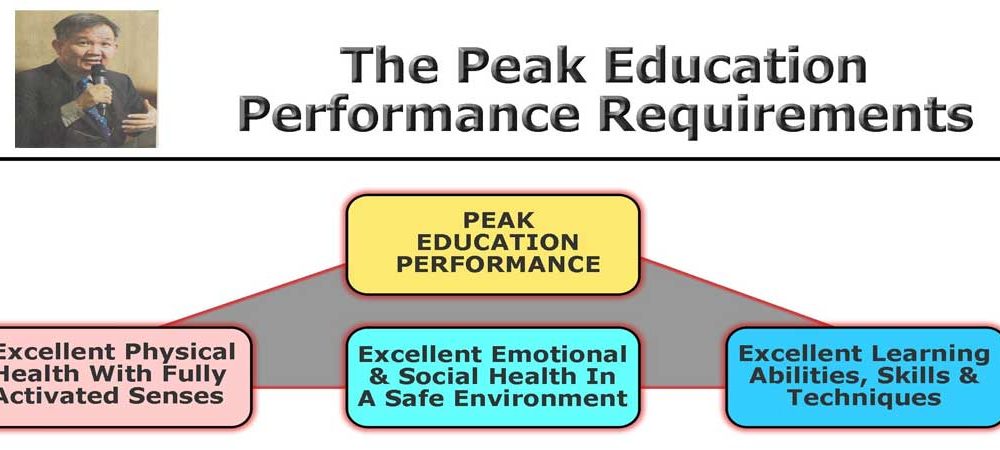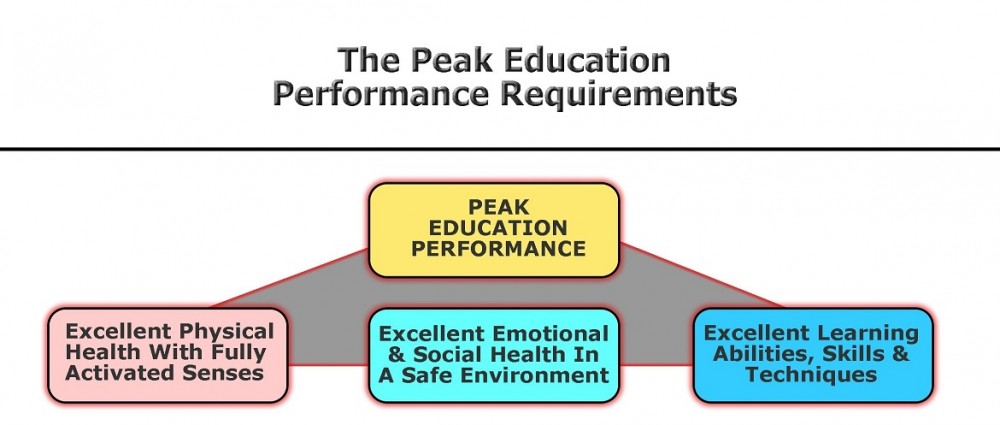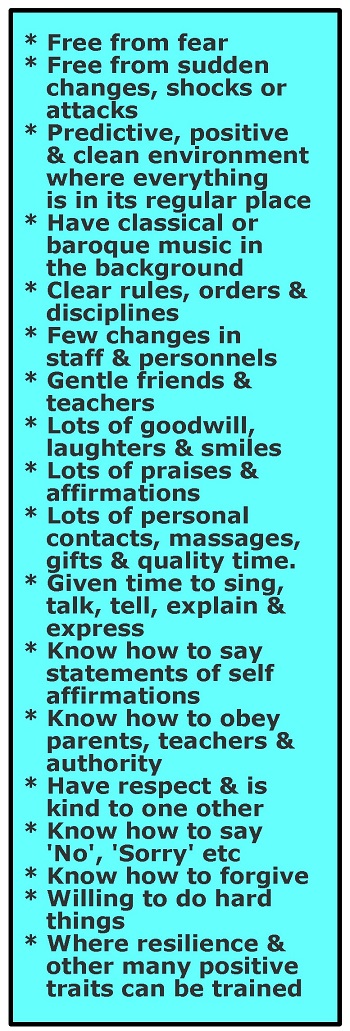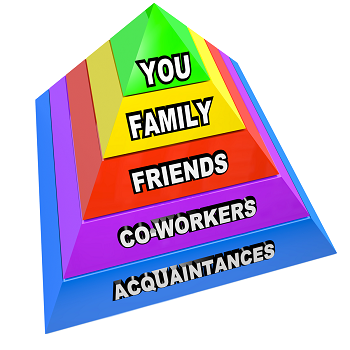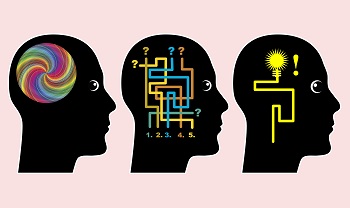21st Century Education and its Challenges
21st Century Education and its Challenges
Our world has changed significantly in the last century. Unfortunately, most current educational systems have not evolved quickly enough to meet the new challenges that our children now face.
For the schools that have evolved, they are no longer educational institutes that merely disseminate data to students to memorise and regurgitate, rather, they have become nerve centres. A place for teachers and students to connect with other like-minded individuals to learn and grow together. Educators in this new environment will become less instructors, spoon feeding information to their students, but become facilitators of learning. Allowing students the ability to turn knowledge into wisdom. In order to effectively educate in the 21st century, educators and administrators need to cultivate and maintain the student’s interest in learning by demonstrating how the curriculum applies in the real world. They must also try to be flexible, teaching according to each student’s needs and abilities. Such a system will greatly enhance the student’s enjoyment of learning, bring out their natural curiosity, and enable lifelong learners.
There are many skills that children will need in order to be successful in this new system of education.
This includes:
Critical thinking skills
Oral presentation skills
Written communication skills
IT skills
A global mindset
The ability to conduct their own research independently
In a 21st century classroom, students should be actually excited and look forward to learning. They will be able collaborate with other students and commercial enterprises both locally and globally.
The environment in the school should be as conducive to learning as possible.
This will foster a love of learning the student will bring along to adulthood.
Challenges faced by modern parents
Challenges faced by modern parents
Modern parents are facing a lot of challenges. Challenges of working, economy, interpersonal relationship have brought much intangible pressure. The most serious problem encountered by parents may not be related to economical or interpersonal, instead they face the greatest difficulty while considering how to cultivate the next generation! What is the right way to nurture a child? And this problem will become more complexed and more difficult!
Chinese families
Especially for Chinese families, we are losing support from the traditional family structure. Although traditional family structure has many shortcomings, it has been there for thousands of years which further help stabilize our society! Now we emigrate more and are under enormous influence of Western culture. Especially while nurturing children, on one hand we have to use the traditional way of nurturing without social support, on the other hand we have little understanding towards the Western way. Chinese parents have no way but to stop there. Parenting is not easy, and for this generation it is even more difficult.
The modern pace is too fast, family structure, values, living environment, living habits, all have changed, and it is a huge change!
Changes in family are even more dramatic. There are more problems and the problems are more complicated especially for Chinese families. Other than such, marriage, life, entertainment and so on could be other matters causing huge impact, and the biggest challenge is education and issues on training of children.
Test Demo
English Test Demo Video 1
Testimonials
Testimonial 1
Testimonial 2
Testimonial 3
Testimonial 4
Testimonial 5
Testimonial 6
English Training
Learning Abilities, Skills & Techniques
After nurturing the child to be physically healthy with fully activated senses and emotionally stable, self-confidence, trusting teachers and other authority figures, able to communicate and work together with friends and willing to do hard things and persevere; we have a most excellent child well prepared to be taught learning abilities which are needed skills to handle all kinds of school subjects, contents and materials.
The 3 basic presentation of objects used in education are figural (pictures or forms representing actual things with its associate sounds such as colors), symbolic (representative images that carry meaning such as mathematic symbols like 1, 2, 3…., +, -, x, etc – with its associated sounds), semantics (such as languages representation – with its associated sounds).
For each type of presentation, the basic skills required are:- abilities to differentiate, recognize, categorize, remember, recall and give names (vocabulary). For young children at the pre-primary level, the child should have been prepared for 13 basic learning abilities to prepare for primary school.
By the end of primary school, the child should have developed 30 learning abilities, skills and techniques as subjects, contents and materials are usually presented in multiple forms which can be rotated and transformed from each other as in a system similar to Rubic’s cube.
As the child develops further, even more finer tuned learning abilities are required to handle more data which can overwhelms students who are not properly prepared.
At the university level, thankfully students are allowed to specialize and choose their major field of studies. Where they are strong in figural learning abilities, these students will choose architectural, building, designs and some engineering. For those strong in symbolic learning abilities, they would choose engineering, sciences, programming and some teaching. For those strong in semantic learning abilities, they would usually choose languages, communication science, business, teaching etc.
When all students are trained in learning abilities, their choices will be greatly expanded and more students could easily handle double majors and even take on more degrees across different faculties. Cross disciplines graduates have distinct advantages and are highly valued in getting employment, and can do research or better prepared to do business on their own.
Emotional Requirements
While there are few children who can perform even in negative situations, most if not all children would appreciate a safe and secure environment for them to learn. The environment should be predictive, positive and clean where everything has its place with clear rules, order and discipline. There should be no bullies threatening the children in school. The children should be able to feedback any fears and concerns to the authorities easily and expect the adults to remove their fears quickly. If possible, there should be very little changes in staff and personnel where the teachers loved their work and projects a lot of goodwill, smiles and laughters.
Quality times are given to sing, talk, tell, explain and express each person’s desire, hopes and stories. Children are taught to appreciate others by cheering and clapping. Help the children to build friendship by putting them into small teams. Give counsel to the ones who didn’t know how to share and serve others. Teaching subjects and contents are only a small part of education for younger children. Learning to love oneself and others are very important for future success in life.
Parents and teachers alike can affirm the child for his or her positive actions and goodwill towards others. Flattery about natural beauty or family wealth are strictly discouraged. Instead praise the child for respecting others and showing kindness as well as obedience to authority. Disobedience acts are quickly identified and corrected. Teach the child to say “Sorry” in a proper manner and also how to forgive others in a proper manner. In our past experience of working with children, it is not unusual to find children who were not taught and have never learnt to say sorry properly or graciously forgive others for their wrongs. Instead they would strike back as their angers build up.
Parents and teachers should try not to punish or if required, to explain the severity of the infractions to the child. Parents and teachers should likewise be quick to forgive and forget wrongdoings expecting that the child will repeat the mistakes again and again until he or she matures and wish not to repeat them again. Very few children will stop doing wrong deeds henceforth after they had been corrected or punished. Children are children and they need time to learn and progress.
Teach the children how to express love using the 5 languages of love identified by Gary Chapman. Encourage children to do acts of services, give gifts, cheer, affirm and celebrate successes are part of the wholesome environment for personal maturation and emotional stability and to help them learn to build positive team dynamics with others.
Encourage the child to do hard or tedious things to build up perseverance and resilience. Success comes from not giving up. This has to be taught as early as possible.
To further enhance emotional stability and calmness, the environment should have proper color co-ordinated and furnished tastefully. Researchers has found that having classical or baroque music playing in the background also create an orderliness to stimulate learning. Classical and baroque music are well know for their orderly projections to calm the human mind and allow the person to focus and concentrate fully on the task at hand.
With a strong, emotionally stable child who is also self-affirmed and has many friends and has the character of resilience and perseverance, there is very little that child cannot achieve in life. .
Physical Requirements
For peak performance, students should be nurtured carefully and healthily. This observation is very reasonable as very few sick students could attend school. Missing out on school work and learning are a great detriment to a child’s learning progress.
Dr. Ng has discovered that there are many less extreme cases where a child is not sick but the general well being is still very poor. These children are sent to go to school to learn but as their physical body is struggling with unease, do not expect them to perform well.
Therefore parents, educators and stakeholders should ensure that the student has adequate rest and nutrition. If parents can afford, it is encouraged that the student undergo medical examinations to find out if there is any lacking minerals or vitamins and whether supplements will help. It is a known fact that certain minerals are critical to a child’s proper development. Some parents felt that having fed the child good food, the child would be able to assimilate the good food. This is not the case as assimilation of the proper nutrients is depended on the child ability to absorb the food. There can be many reasons why a child is not able to absorb the proper nutrition. A medical doctor can be of great assistance in such cases.
Dr. Ng has also observed that in some young children, especially young boys, they seems to have accumulated a lot of mercury in their tiny bodies. A simple urine or a saliva test may be given to uncover such toxicity. The symptoms of small level of mercury poisoning can be similar to children suffering from autism spectrum disorders as well as other adverse neuro-developmental outcomes. It is best to remove these mercury as much as possible first.
Having ascertained that the child is physically well, it is strongly recommended to visit an optometrist before starting school. Many parents know the importance of taking their children to the dentists for regular check-up; but few know the importance of consulting the optometrist. As most learning in the school system requires the child to see the materials as the teacher explains the subject. Therefore the child must be able to see clearly and to track the teacher’s hand and mouth movements.
Likewise, if you suspect that your child is not able to distinguish similar sounding words properly, your child should be properly checked out by an audiologist. Having a good ear and extended hearing range is critical to language development and communication skill where intonation and nuances are part of the message. For example, to learn the Chinese language, students must be able to differentiate 4 tones such as 妈 (Mā), 麻 (Má), 马(Mǎ), 骂 (Mà) ; where each word although similar sounding albeit different intonation carries totally different meaning. In some other languages, there are 8 intonations making such languages even more difficult for children with poor audio differentiation abilities.
The child should be able to move with rhythms and beat with the right timing. Both gross motor skills and fine motor skills should also be developed as the child matures. Crawling, walking, running, jumping, skipping, balancing, bending, turning upside down, cart-wheeling and more fun exercises should all have been taught to the child to lay the proper foundation of experiencing things in space, time and movement.
Peak Performance
Dr. Ng has uncovered that certain conditions are necessary for a student to consistently achieve peak performance. These conditions are:-
- To have excellent physical health and all the senses are fully activated and working well. This requires the student to be free from diseases or toxins or physical handicaps.
- To have a safe environment free from discomforts and anxieties about himself or herself. This requires the student to have self confidence and be socially adapt, communicative and expressive to know what he or she wants from others.
- To have the fundamental abilities to process data and materials presented in every different ways and to find short cuts to handle them. This requires the student to see through the subject requirements quickly and have a set of tools, skills and techniques to make short work of the subjects.
Each necessary requirement will be presented on its own.
Click below for direct link here to:
Excellent physical health with fully activated senses.
Share Dr. Ng’s Program
Dr. Ng’s program has helped thousands of children directly. Through many radio and television programs, newspaper articles and public seminars, he has helped many more parents, grand-parents, teachers and principals realized the important of empowering the child to be an “All Style” learner.
Dr. Ng needs your help to share his program to help many more. After 20 years of researching and working on his program, he is now building a web-based program that can benefit the whole world. The current sharing method using radio and television programs, newspaper articles and public seminars are time consuming and restrictive.
Each of you are an important person and influence to your family, friends, co-workers and acquaintances. By sharing what you know to help their children’s education and future life success, you will benefit them greatly and make our society a better place. Successful children will grow up to build an even better society for our subsequent generations. Without a doubt, society depends on the quality of our children. Bless them with superior understanding and learning by educating them to be “All Style” learner.
We have a wonderful reward system for you to help us. Join us as a member, undergoes the training, bring 5 other interested stakeholders to join the reward system and you will qualify for monetary rewards too. Come to our sharing sessions to know about the monetary rewards. Our representative members will contact you if you would fill this contact form. Thank you.
Learning Styles
Educators have known that people learn differently. Each person has his or her own “Learning Styles” which are usually categorized as Visual Learner, Audio Learner & Kinethetic Learner.
Such information is needed to help people with learning disabilities. Subject, contents and materials can then be presented and taught according to the learning style of the student. However not every student will meet an educator who knows exactly how best to present the subject according to his or her learning style. Moreover, this is just not possible in a class learning environment where there are lots of other students and not everyone has the same learning styles. The teacher can only presents the subject, content and material according to the norm of the class. As a result, students that do not have this norm or generic learning style will not learn very well.
The above explains why excellent tuition teachers are very important and they are paid very well because they can really help an individual student according to the student’s learning style.
There are some subjects (such as mathematics and languages) that educators find challenging to present the contents and materials according to learning style. As as result, some students will feel that they are stupid and unable to handle the learn these subjects. They would shy away from these subjects for the rest of their lives and limited their career potential because they think that these subjects are impossible to understand. For educators and stakeholders to “re-work” each subject, content and material to suit each student’s learning style is both tedious and expensive, as this step has to be done for every year of schooling.
The proper approach to help the student is to teach him or her to be an “All Style” learner. An “All Style” learner can handle subjects, contents and materials presented in the “Audio Style”, “Visual Style”, or “Kinethetic Style”. There is no limit to the learning because regardless of how the subjects, contents and materials are presented, the student has the abilities to handle them (recognize, understand, relate, digest, rotate, evaluate, create, etc) in every form.
It is more economical to train the child to be an “All Style” learner with an important benefit that the child can learn anything and reach his or her full potential in their chosen career.
Teaching the student all the necessary learning abilities is the only proper form of educating the student for success in life as no one knows which industries are most needed and valued in future.



